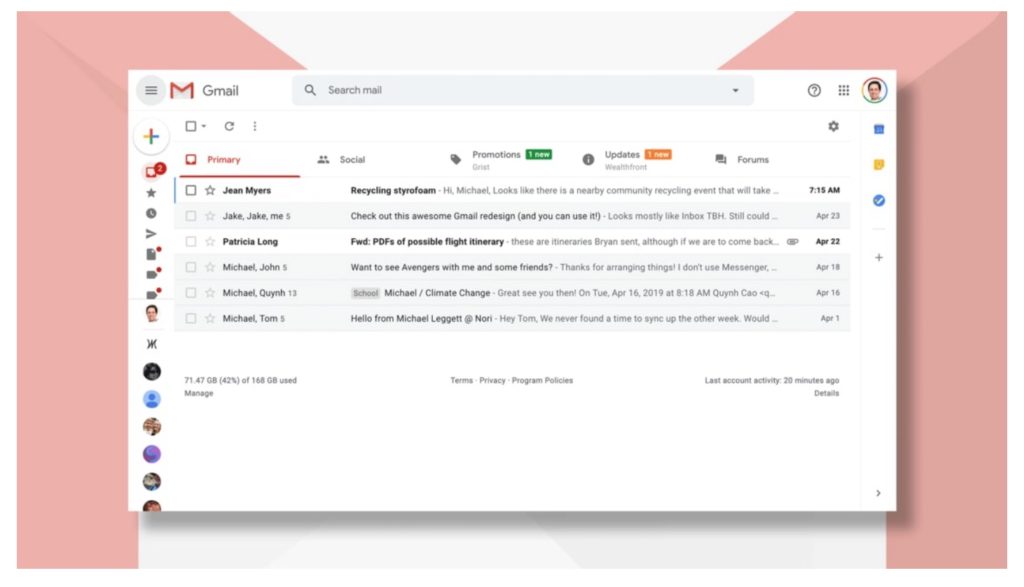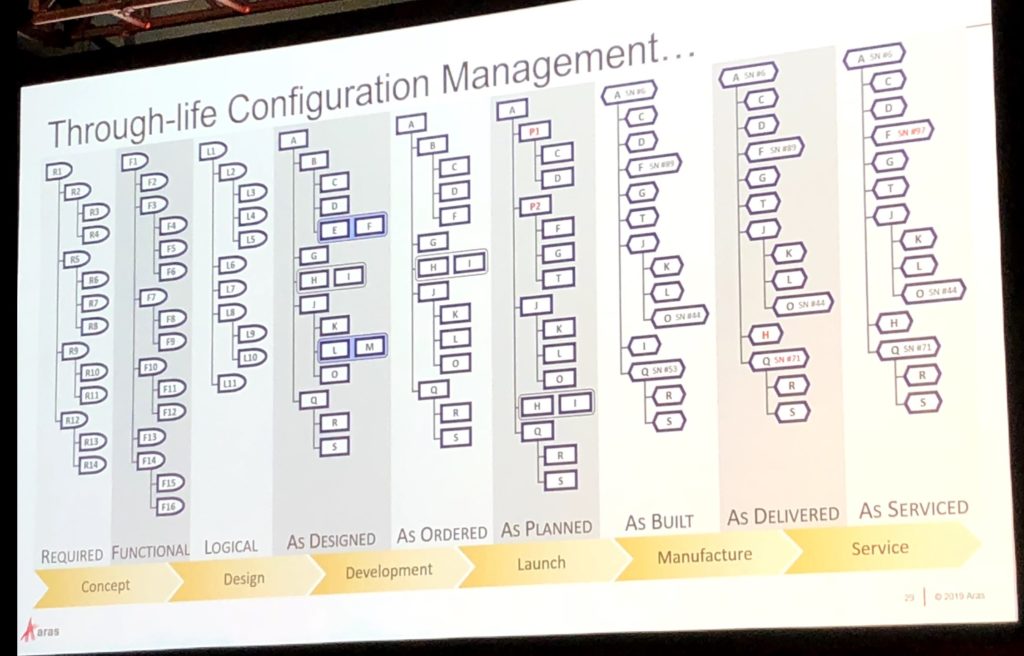
Engineering and manufacturing systems are enormously complex. One of the biggest reason is information complexity. An average PLM application is managing multiple structures of data – documents, bill of materials, requirements, activities, and tasks. Everything is connected and depended. Then you connect the novel concept of digital transformation, Internet of things, information about physical products, etc. etc…
There are a variety of ways to present the complexity of PLM data. Here are two examples. One comes from Aras ACE 2019 and shows dependencies between structures and digital thread.

Another one is my example from OpenBOM (disclosure – I’m CEO and co-founder) and demonstrates you the number of dependencies in Bill of Material with applied changes. Check my presentation at Neo4j meetup in Boston last year here. The following picture inspired by Ken Amman of CIMdata gives you an idea of BOM structure complexity.

My attention was caught by FastCompany article The former lead designer of Gmail just fixed Gmail on his own. Read the article. It speaks about Michael Leggett – lead designer for Gmail from 2008 to 2012. He made Simplify to solve Gmail information overload problem. Read the story and draw your opinion. My favorite passage is related to the complexity of email information and other applications.
Leggett has been trying to fix Gmail for over a decade. He remembers developing a massively complex Gmail concept back in 2008, that wrapped many of Google’s services into Gmail itself, with things like your Docs and chat filling tiny windows in a single browser screen. “We gave that to Larry and Sergey, and they were like, ‘This looks awful,’” Leggett recounts. “We walked out of the meeting and said, ‘They’re right. This is awful . . . “The original vision was much, much bigger than email,” says Leggett. “It was an app to replace every Google app but Search. It was a personal information app. It had a lot of different data sources–some even outside Google. It was like your inbox for the web, News, Calendar, and Docs.”
Can I compare PLM systems with Gmail and all Google Apps complexity? Honestly, I think PLM apps much complex. Which brings the biggest challenge related to the usability of these applications. In my view, all industry conversations about digital transformation will end up with questions about how to provide an application to visualize and display data. And the question of how to simplify existing user experience will be one of the most critical aspects of this work.
What is my conclusion? In the world of information overload, all discussions about digital transformation will lead to information user experience. What will be the next information space experience? Will it be 3D? Immersive in virtual reality or simplified to single atoms of information? I think this is one of the most challenging tasks for PLM information architects. But PLM vendors are not alone in this game. An entire IT industry will be looking at how to solve this solution. Just my thoughts…
Best, Oleg
Disclaimer: I’m co-founder and CEO of OpenBOM developing cloud-based bill of materials and inventory management tool for manufacturing companies, hardware startups, and supply chain. My opinion can be unintentionally biased.
The post The route towards PLM usability and lessons from Gmail Simplify appeared first on Beyond PLM (Product Lifecycle Management) Blog.



Be the first to post a comment.